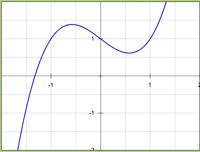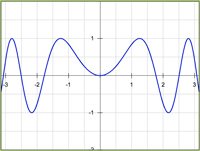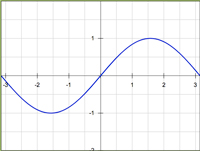Properties of Functions
Odd and Even Functions
Def. A function is even if for every x in its domain -x is also in its domain and
f(x) = f(-x)
Def. A function is odd if for every x in its domain -x is also in its domain and
f(x) = - f(-x)
In other words, a function is even means that a point (x,y) belongs to the graph y=f(x) if and only if the point (-x,y) belongs to the graph. Thus, a function is even if and only if its graph is symmetric about the y-axis.
Similarly, a function is odd means that a point (x,y) belongs to the graph y=f(x) if and only if the point (-x,-y) belongs to the graph. Thus, a function is odd if and only if its graph is symmetric about the origin.
One the following graphs represents an odd function, one an even function, and one represents a function which is neither odd nor even. Which is which?



The first graph represents a function that is neither odd nor even as the graph is not symmetric with respect to the origin or to the y-axis. The second graph is the graph of an even function. The last one, symmetric about the origin, represents an odd function.
Click for: